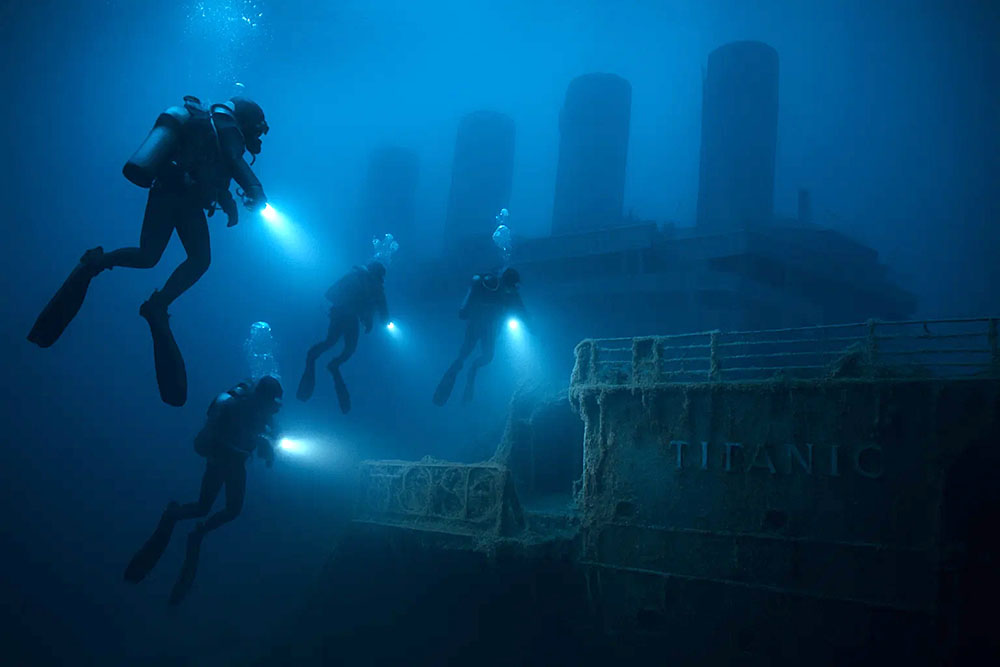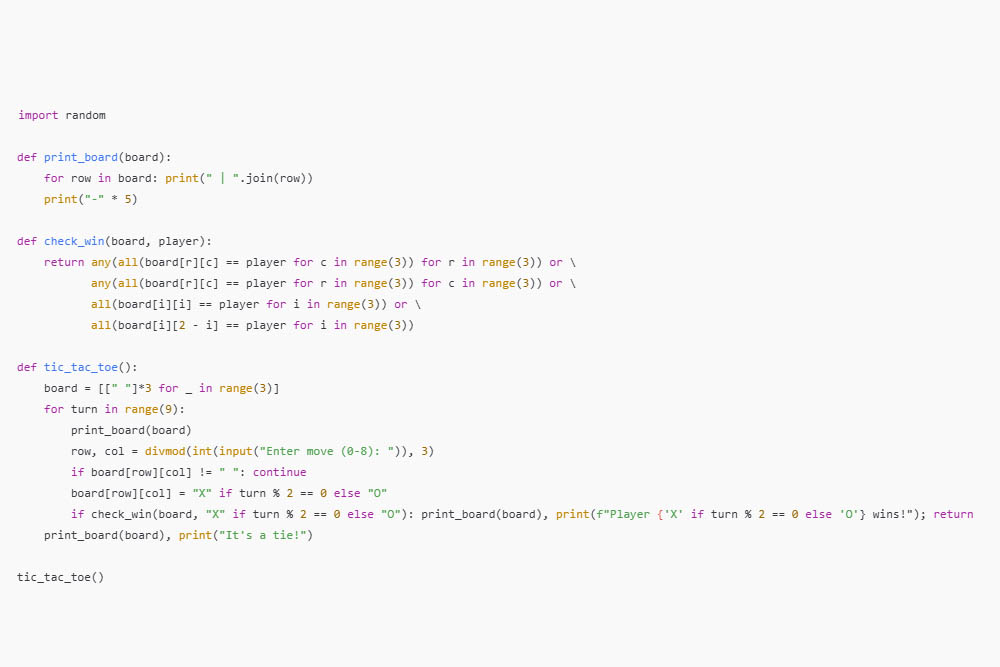Artificial Intelligence (AI) is already transforming the way we live and work, and its influence will only grow in the coming years. From enhancing everyday tasks to revolutionizing entire industries, AI is becoming an integral part of our future. In this article, we’ll explore the profound impact AI will have across various sectors, from healthcare and education to the creative industries and ethical considerations.
The text and images in this article were all generated by AI in a matter of seconds. Something a human could never do. Search engines will see this, know it’s AI and will mark the page down but that doesn’t matter as this page wasn’t created for search results.
OpenAI tools were used for this article. The text, including the bullet points, was generated by ChatGPT, I gave it a title and a bit of a nudge in the right direction and it generated the copy. The images were generated with Sora and the programming example was created with Codex.
Workplace Transformation: The Future of Jobs
AI is reshaping the workplace in a number of ways. Automation is streamlining tasks that were once time-consuming, and many companies are adopting AI-driven tools to increase efficiency and productivity. While this is creating new opportunities, it’s also leading to job displacement in some sectors.
Key Trends:
- Automation of routine tasks: AI systems are increasingly handling repetitive tasks, such as data entry, customer service, and even decision-making.
- Creation of new roles: As AI takes over some jobs, it’s creating new roles focused on AI development, ethics, and management.
- Upskilling and reskilling: Companies are investing in training programs to equip workers with the skills needed for AI-driven roles.
Healthcare Innovations: AI in Medicine
AI is revolutionizing healthcare, making diagnostics faster and more accurate, and enabling personalized treatment plans tailored to individual patients. Machine learning algorithms can analyze vast amounts of medical data to detect diseases early and predict outcomes.
Key Trends:
- AI in diagnostics: AI can analyze medical imaging and detect conditions like cancer and heart disease with greater precision than humans.
- Personalized treatment plans: By analyzing genetic data, AI can help create personalized medicine tailored to each patient’s needs.
- Drug discovery: AI is accelerating the drug discovery process, enabling researchers to identify potential treatments faster and more cost-effectively.

Elephant biker
The prompt:
Create an ultra-realistic high-resolution photo of an elephant riding a Harley Davidson style motorbike out in the desert. Make it a clear day with soft-natural lighting. The elephant should look like it is part of a biker gang. The background shows snow capped mountains in the distance like the Sierra Nevada ranges. The photo looks as if it was taken with a professional DSLR and should be fully realistic and editorial by nature.
Education Revolution: AI as a Learning Partner
In education, AI is transforming the way students learn by offering personalized and adaptive learning experiences. Virtual tutors powered by AI can help students at all levels grasp difficult concepts at their own pace.
Key Trends:
- Personalized learning: AI can assess students’ strengths and weaknesses and deliver customized lessons to help them succeed.
- Virtual tutors: AI-powered tools are providing on-demand tutoring, allowing students to get the help they need, anytime and anywhere.
- Automation of administrative tasks: AI is also streamlining administrative duties, such as grading, scheduling, and student performance tracking.
Creative Industries: AI’s Influence on Art and Entertainment
AI is not just limited to technical fields—it’s also making its mark in the creative industries. From AI-generated art to music and film, creators are exploring the boundaries of AI’s capabilities to enhance their work.
Key Trends:
- AI in art and design: Artists are using AI tools to create innovative artwork and designs, allowing for the exploration of new styles and techniques.
- AI-generated music: AI is helping musicians compose music, create new sounds, and even collaborate with machines to produce original works.
- Content creation: AI is automating content generation, from writing articles to creating video scripts, making it easier for creators to produce high-quality material at scale.

Exploring the Titanic
The prompt:
Picture a group of scuba divers in deep blue waters, hovering near the wreckage of the Titanic. Their flashlights illuminate parts of the ship’s remains, perhaps the grand staircase or a famous area like the captain’s bridge, casting eerie shadows against the rusted metal. You could show the divers in full gear, with bubbles rising from their tanks, adding a sense of movement and life to the scene. The backdrop could include a faint, almost ghostly, outline of the Titanic’s hull stretching into the distance, emphasizing its large scale and the mystery surrounding it. Make sure you can see the four smokestacks clearly. Don’t include any floating objects in the water and make sure the name Titanic is visible.
Ethical Considerations: The Dark Side of AI
As AI becomes more integrated into our lives, it raises important ethical questions. Concerns around data privacy, algorithmic bias, and accountability in decision-making are becoming more pressing.
Key Issues:
- Bias in AI algorithms: AI systems are only as good as the data they’re trained on. If the data is biased, the results will be too, potentially leading to unfair outcomes in areas like hiring, lending, and law enforcement.
- Data privacy: AI systems require vast amounts of personal data, raising concerns about how that data is collected, stored, and used.
- Accountability: Who is responsible when an AI system makes a mistake? This question is particularly relevant in industries like healthcare, where AI can have life-or-death consequences.
AI and Sustainability: A Green Future?
AI also holds the potential to help tackle some of the world’s most pressing environmental challenges. From optimizing energy use to helping combat climate change, AI could play a pivotal role in building a sustainable future.
Key Trends:
- Energy optimization: AI is being used to reduce energy consumption in industries like manufacturing, transportation, and even agriculture.
- Climate modeling: AI is helping scientists develop more accurate climate models, which can inform policies and actions to mitigate climate change.
- Sustainable resource management: AI can improve the efficiency of resource use, from water management to waste reduction, helping create more sustainable practices in industries worldwide.

Tic Tac Toe in Python
The prompt:
Write me a game of Tic Tac Toe in Python.
The programming applications of AI are amazing. As a programmer in a past life, the speed at which I can build, analyze and test an application with assistance from AI is incredible. The important thing to remember is not to blindly trust AI, these engines do make errors.
Conclusion: Embracing the Future of AI
AI is no longer just a buzzword—it’s a transformative force reshaping how we live, work, and interact with technology. From revolutionizing healthcare and education to raising ethical concerns, AI is impacting our future in profound ways. To navigate this fast-paced evolution, staying informed and engaged in the conversation is crucial.
As AI rapidly develops, it brings both opportunities and challenges. Understanding its potential and pitfalls will help us harness its power responsibly. The future of AI depends on how we regulate and integrate these technologies into our lives, balancing innovation with ethical use.
The future is exciting and scary at the same time, the artificial intelligence technology is moving at such a rate where it’s almost moving too fast. Regulation hasn’t caught up to it yet and the future will be interesting.
